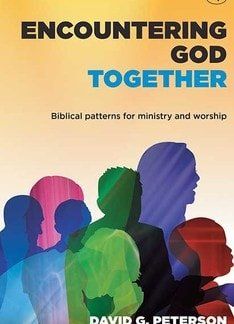Encountering God togetherDavid G. PetersonIVP, 192 pages, £9.99, ISBN: 978-1-84474-607-1
Star Rating : 2
I would categorise this book as appealing to a broad evangelical audience though rightly excluding Charismatic influences. David Peterson seems to view worship services in two primary categories, ‘traditional’ or ‘more contemporary’ (p. 13). I understand what he means, but herein lies a danger. All too often these convenient labels are used without asking the question, ‘What is the biblical pattern for worship?’ There are ten chapters, which paint with ‘broad brush-strokes’. I believe that one of the aims of this book is to help those who lead church services to do so more effectively. The opening line of the introduction states: ‘I am often disturbed or disappointed by what I experience when I “go to church”’ (p. 11). This sentence sets the tone and, if you are similarly frustrated, then the author may give you some answers. The second chapter is called ‘Worshipping God’. While Peterson seeks to provide answers on his overall theme ‘Encountering God together’, he asserts that ‘nowhere in Scripture is worship actually defined’ (p. 28). On the one hand he supplies answers, but on the other hand says that Scripture does not provide clear answers. On such a theme as worship, I find this statement perplexing. The first four commandments of the Decalogue frame what worship is with unmistakable clarity. ‘Patterns of service’ is the fourth chapter and it describes a whole range of valid possibilities for worship gatherings. Again we face one of the author’s indefinite ideas, as he writes that ‘the New Testament gives little indication of how early Christian gatherings were led’ (p. 74). In my assessment, it was elders who were responsible for spiritual leadership in the church (Acts 20:17-38; 1 Timothy 3:1-7; Titus 1:5-9) and this has ongoing implications for the church today. Peterson holds a broad leadership model which pervades his thought on this whole matter. He believes pastors ‘should supervise the process of planning and conducting edifying gatherings, even if others are given substantial responsibility in this area’ (pp. 77-78). In later chapters he deals with preaching/exhortation, praying together, singing together, and the sacraments of baptism and the Lord’s Supper. However, the approach is again broad, one that endorses many possibilities of practice conducted by a wide spectrum of participants. In conclusion, we are reminded that at the Reformation two models for public worship emerged. The normative principle for public worship is that if something is not explicitly forbidden by Scripture then it is permissible, but the regulative principle holds that only those things expressly commanded in Scripture should be practised. The author of this book holds to the normative principle, while this reviewer holds to the regulative principle.Kevin BidwellSheffield








